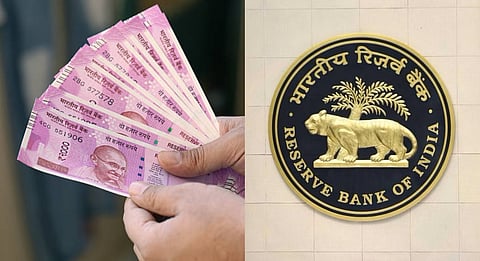Here's all you need to know about RBI's move to eschew ₹2000 notes
Like the shocking demonetization campaign in India in 2016, the recent announcement by the RBI regarding the withdrawal of ₹2000 notes would have already stunned you by now (yep, the good old pink note which was once rumoured to carry a GPS chip had a very short-lived fame).
And just as you might be hastily preparing to visit your bank for note exchange, it's important to note that, as of now, these notes are still considered legal tender for the citizens.
For the implementation of the decision in a time-bound manner and to provide adequate time to the public, RBI has directed all banks to provide deposit and/or exchange facility for ₹2000 banknotes until September 30, 2023.
Now, to delve deeper into the complexities of this crucial decision, let's examine the frequently asked questions (FAQs) pertaining to the announcement.
Why are ₹2000 notes no longer commonly found in the markets?
The ₹2000 denomination banknote was introduced in November 2016, during India's recent demonetisation campaign, under Section 24(1) of RBI Act, 1934. These were introduced primarily to meet the currency requirement of the economy in an expeditious manner after the withdrawal of legal tender status of all ₹500 and ₹1000 banknotes in circulation at that time.
The objective of introducing ₹2000 banknotes was met once banknotes in other denominations became available in adequate quantities. Therefore, printing of ₹2000 banknotes was stopped in 2018-19.
What is the purpose behind the withdrawal of these bills by RBI?
About 89% of the ₹2000 denomination banknotes were issued prior to March 2017 and are at the end of their estimated life-span of 4-5 years. The total value of these banknotes in circulation has declined from ₹6.73 lakh crore at its peak as on March 31, 2018 (37.3% of Notes in Circulation) to ₹3.62 lakh crore constituting only 10.8% of Notes in Circulation on March 31, 2023.
It has also been observed that this denomination is not commonly used for transactions. Further, the stock of banknotes in other denominations continues to be adequate to meet the currency requirement of the public.
In view of the above, and in pursuance of the “Clean Note Policy” of the Reserve Bank of India, it has been decided to withdraw the ₹2000 denomination banknotes from circulation.
Can I use ₹2000 notes for making purchases?
Yes, as per RBI's guidelines, the ₹2000 denomination notes remain legal tender, which means these can be used anywhere in the market for accepting payment/making purchases.
However, RBI encourages the public to get these notes deposited/exchanged from any of the banks by September 30. Furthermore, the body has directed all the banks to phase out the circulation of ₹2000 notes with immediate effect.
Will I be required to pay any charges for exchanging these notes?
No, the general public has the option to exchange ₹2000 notes at any bank without incurring any charges. It is not mandatory for individuals to hold an account with a specific bank for the purpose of exchanging these notes.
Account holders, on the other hand, can deposit these notes in their respective banks without any fee.
Is there any limit on the exchange facility in the banks?
Yes, there will be a limit of ₹20,000 for a single exchange transaction owing to the procedures regarding customer due diligence (CDD).
In addition, the facility for exchange of ₹2000 banknotes shall also be provided at the 19 Regional Offices (ROs) of RBI having Issue Departments from May 23, 2023.
If you want to acquire more detailed information and gain a comprehensive understanding of the RBI's guidelines pertaining to this initiative, you can refer to the official FAQs released by the organization from here.
To get all the latest content, download our mobile application. Available for both iOS & Android devices.

